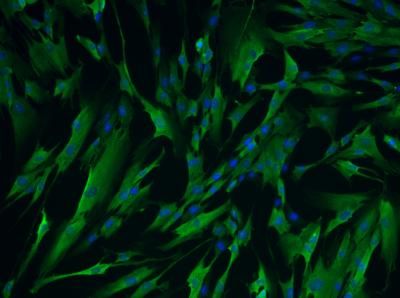Alzheimer's disease linked to mitochondrial damage
ree radicals generated by beta-amyloid proteins lead to mitochondrial fragmentation
Advertisement
Investigators at Burnham Institute for Medical Research have demonstrated that attacks on the mitochondrial protein Drp1 by the free radical nitric oxide — which causes a chemical reaction called S-nitrosylation — mediates neurodegeneration associated with Alzheimer's disease. Prior to this study, the mechanism by which beta-amyloid protein caused synaptic damage to neurons in Alzheimer's disease was unknown. These findings suggest that preventing S-nitrosylation of Drp1 may reduce or even prevent neurodegeneration in Alzheimer's patients. The paper was published in Science .
The team of scientists, led by neuroscientist and clinical neurologist Stuart A. Lipton, M.D., Ph.D., director of the Del E. Webb Center for Neuroscience, Aging and Stem Cell Research, showed that S-nitrosylated Drp1 (SNO-Drp1) facilitates mitochondrial fragmentation, damaging regions of nerve cell communication called synapses.
"We now have a better understanding of the mechanism by which beta-amyloid protein causes neurodegeneration in Alzheimer's disease," said Dr. Lipton. "We found that beta-amyloid can generate nitric oxide that reacts with Drp1. By identifying Drp1 as the protein responsible for synaptic injury, we now have a new target for developing drugs that may slow or stop the progression of Alzheimer's."
Drp1 is an enzyme that mediates fission or fragmentation of mitochondria. The Burnham researchers showed that excessive production of nitric oxide caused S-nitrosylation of Drp1 and induced excessive fragmentation of mitochondria in cultured nerve cells or neurons. The scientists also showed that beta-amyloid protein multimers, which had been previously implicated in Alzheimer's disease, induced formation of SNO-Drp1. Importantly, elevated SNO-Drp1 levels were also found in human brains of Alzheimer's patients, but not in those with Parkinson's disease or controls who didn't have neurodegenerative diseases.
Molecular modeling performed by the team suggested that S-nitrosylation of Drp1 causes dimerization of the protein and activation of enzymatic activity that induces mitochondrial fragmentation. To confirm this hypothesis, the scientists showed that RNA interference to knock down Drp1 or a mutation that prevented Drp1 activity inhibited excess mitochondrial fragmentation and protected the neurons. Finally, the researchers showed that a mutated Drp1, lacking the nitrosylation site, did not induce mitochondrial fragmentation and also prevented neuronal damage. Taken together, these findings suggest that multimers of beta-amyloid protein induce generation of nitric oxide, which reacts with Drp1 to cause excessive mitochondrial fragmentation and in turn neuronal damage.
















































